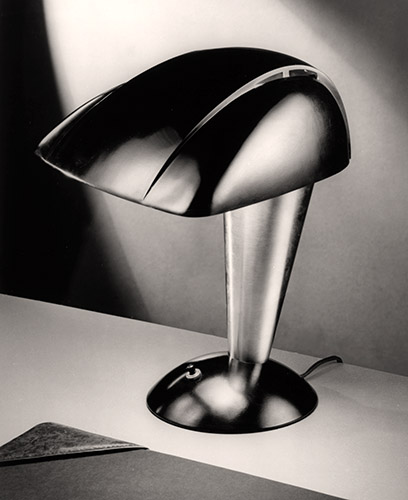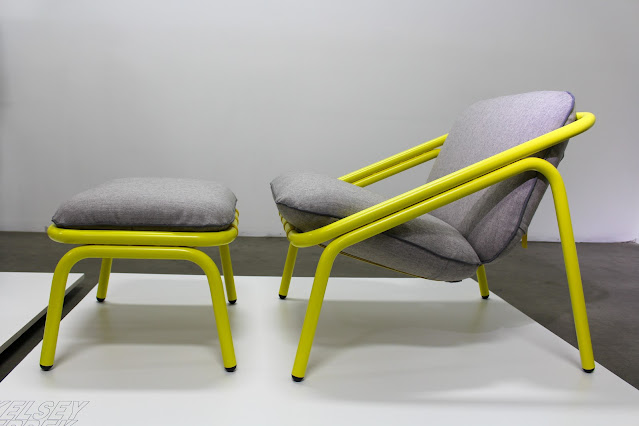The Polaroid Desk Lamp of 1937 - the design story
 |
| The Polaroid Desk Lamp No. 114 - 1937 - photo courtesy TEAGUE |
Although today we associate Polaroid with instant
photographs, the company was originally was founded on the invention of
polarized film. Edwin Land worked with researchers to develop applications for
his new film in the 1930's and were striving to find a successful product. They
developed a polarizing lens filter for Eastman Kodak in 1933, which is likely
how they connected with Walter Dorwin Teague. One of those experimental products was a desk
lamp that emitted polarized light, reducing the reflective glare and easing eye
strain. The first product was a blocky chunk of Bakelite, largely dictated by
engineering constraints. Teague, with
staff designer Frank Del Giudice, took those constraints
and imagined a new form, the Polaroid Desk Lamp No 114.
Frank was the first Teague designer to have a formal education in industrial design. (The others either came from architecture, engineering, or graphics.) Frank went to Pratt Institute and consequently studied under Rowena Reed Kostellow. And if you know Ms. Reed's abstract form teachings, you will recognize them immediately in this design. The 3 curvilinear volumetric forms are the paraboloid - dominant, the cone - sub dominant, and the spherical plinth - sub ordinate.
Although
one may think that he was imitating the style of streamlining and automobile
fenders, the shape of the shade was functional by nature.
It was based on a mathematical parabola, reflecting the light from the
bulb at its focus center and downward as parallel rays. The rays passed through
the polarized filter and then onto the desk surface. The lamp was not commercially successful, but
today is a collectible design example of the machine age, and is worth well
over $1500 USD.
 |
| Frank Del Guidice - Industrial Designer with Teague - 1966 |
Frank Del Guidice went on to form the Seattle branch of the Teague office to work on the Boeing Stratocruiser, and then all subsequent Boeing aircraft interiors to this day.
Follow the progress of the Walter Dorwin Teague Documentary on Facebook.



Comments